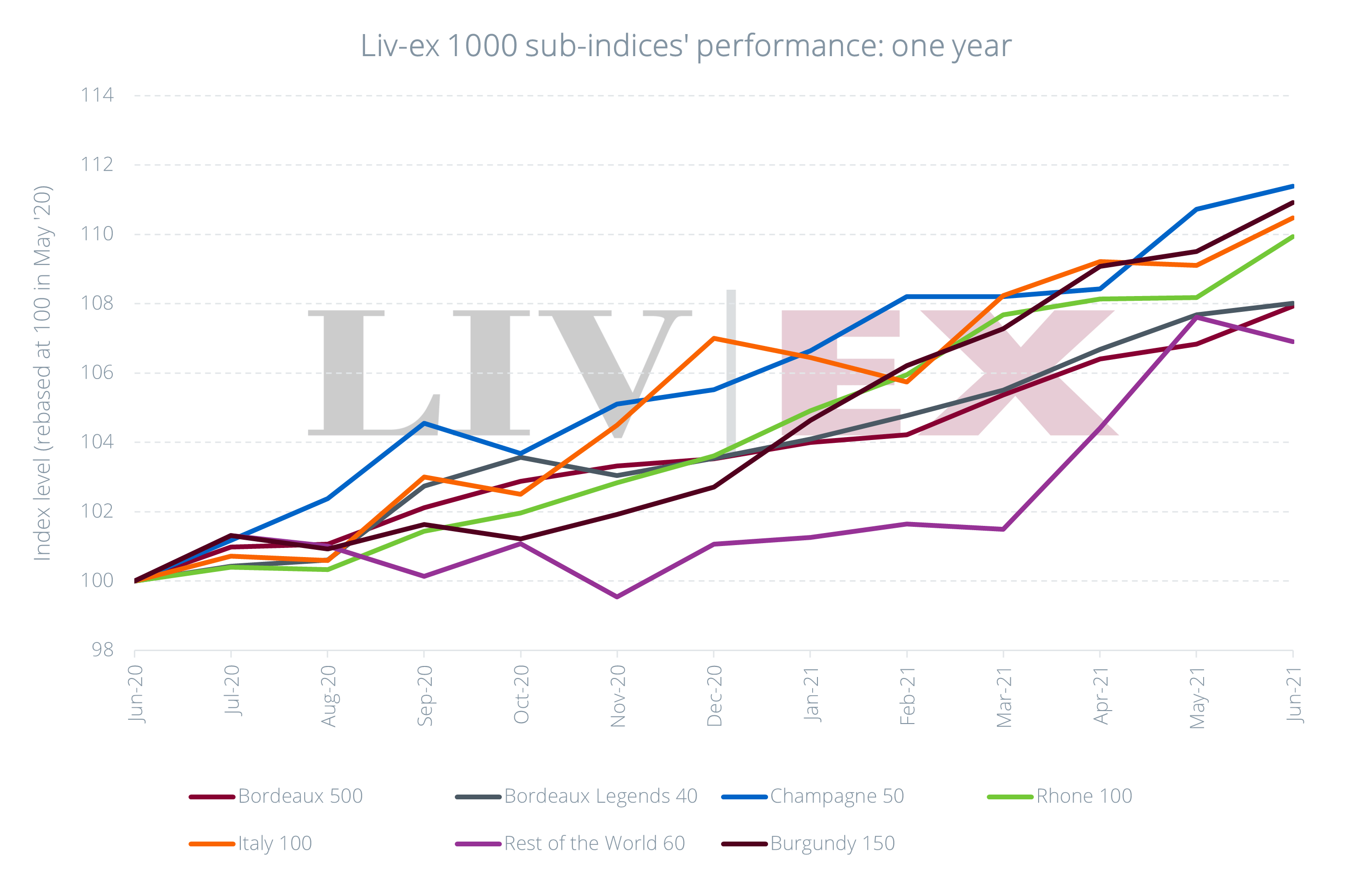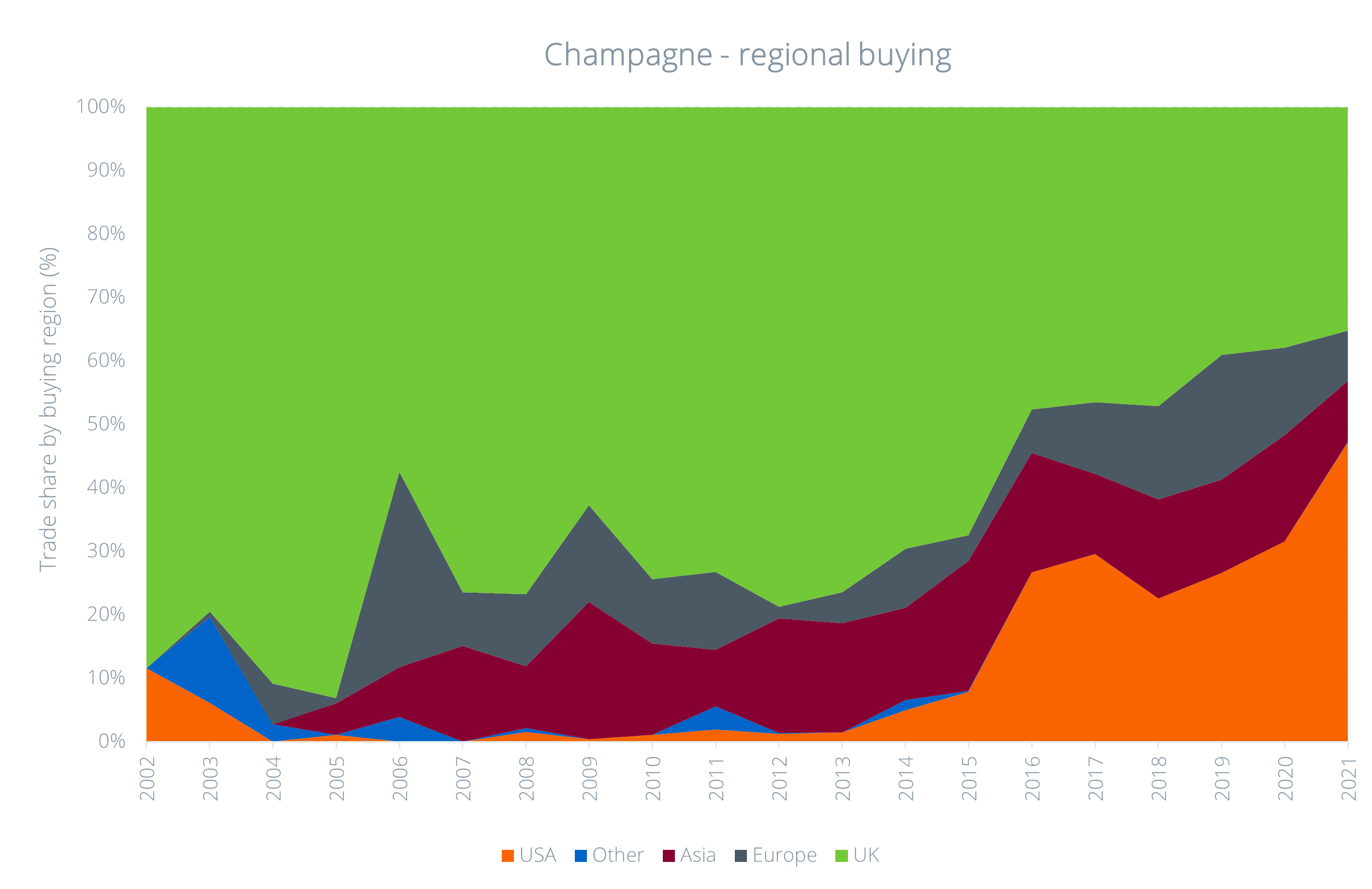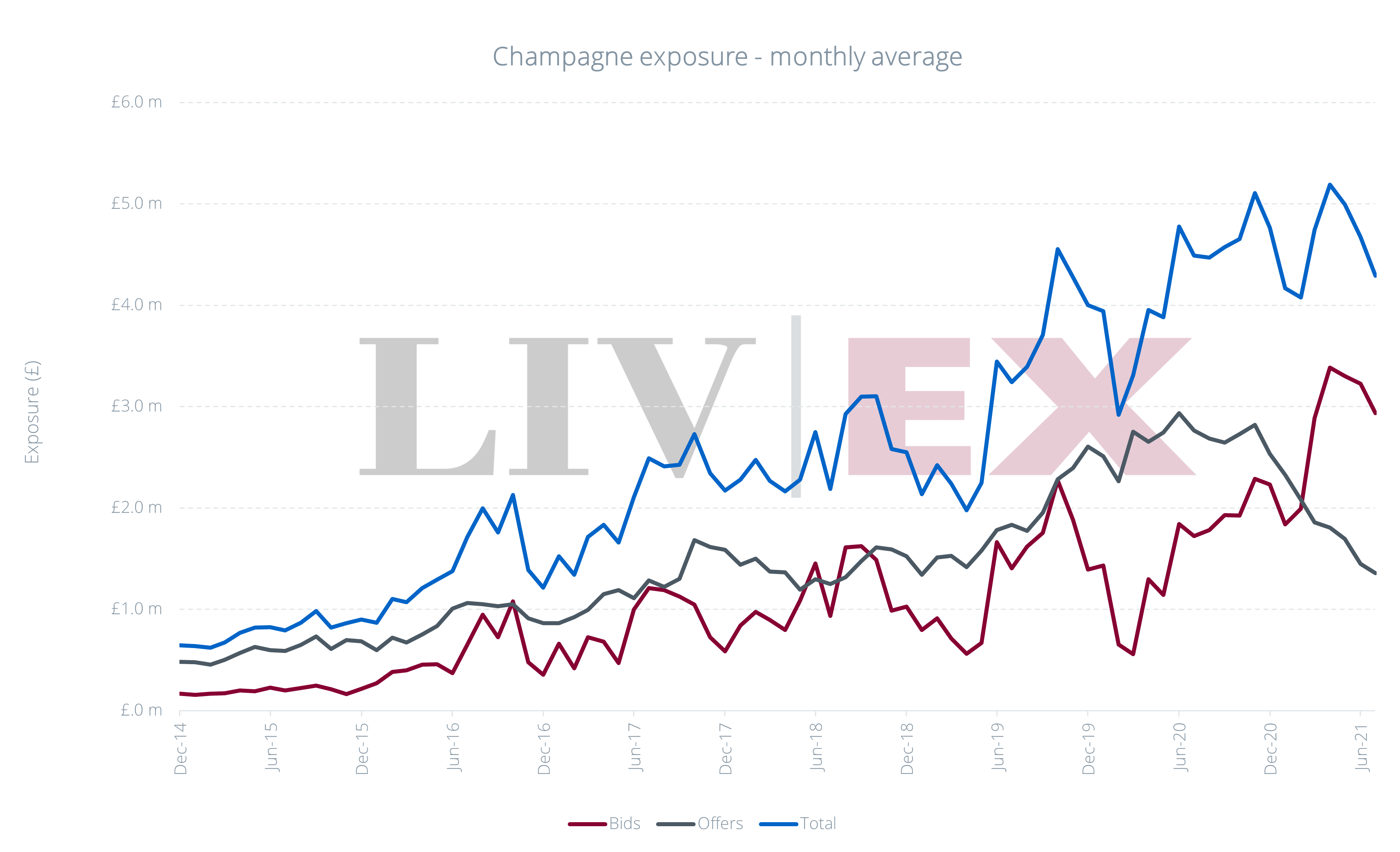- LVMH temporarily halts Champagne deliveries to Russia following Putin’s new “sparkling wine” law.
- Buying demand for Champagne has risen in 2021, as exposure reaches record high.
- The Champagne 50 is the best performing regional index over one year.
The Russian law
On Friday (2nd July), Russia’s president, Vladimir Putin, signed a new law, requiring all overseas producers of sparkling wine – including Champagne houses and growers – to label their bottles as ‘sparkling wine’ with immediate effect. Only Russian producers of sparkling wine can use the word “Champagne” (“shampanskoye”) on their labels.
LVMH suspended exports to Russia following the announcement, but not for long. Moët Hennessy confirmed to Reuters that the company had halted exports to Russia “very temporarily” in order to make adjustments to back labels and logistics.
Drinks market expert Vadim Drobiz suggested in The Moscow Times that, “Moët Hennessy’s share of the Russian market was relatively small and well-heeled clients could find a replacement”.
Decanter reported that shares in leading Russian sparkling wine producer Abrau-Durso have moved up by more than 5% in early trading. Meanwhile, LVMH shares are down around 0.4%.
Growing significance
Champagne has been a growing category on the secondary market for years. Its unparalleled distribution network, strong brands and international appeal have made it one of the most important forces in the fine wine market.
Its share of trade by value has been consistently rising, from 1.2% in 2010 to 8.2% so far in 2021.
Within that, there has been a greater diversity of brands trading. The number of distinct wines trading on Liv-ex has climbed over 1,428% between 2010-2020, across vintage and non-vintage, white and rosé bubbles from the French region.
As one of the few regions excluded from Trump’s 25% US tariffs introduced in 2019, Champagne lured active buyers with its collectible appeal, low volatility and relatively low priced entry point.
The Champagne 50 has been the best performing Liv-ex 1000 sub-index over one year, up 11.4%.

Buying demand for Champagne
But how important is Russia for the development of the secondary market for Champagne? Regional trends go some way in telling the story.
The UK, and increasingly the USA, have been the biggest buyers. So far in 2021, 47% of Champagne buying came from the States; the UK accounted for 35%; Asia took 9.6% and Europe 7.9%.
As “Europe’s” share of trade is split between other keen Champagne drinking markets such as Belgium, the Nordics and France itself, Russia’s secondary market share will be tiny at most.
As an export market, however, Russia has a long history with Champagne. Louis Roederer’s Cristal label, one of the market leading cuvées today, was originally created for the country’s Tsars.
Furthermore, with the Comité Champagne reporting volume shipment declines of 18% in 2020, and a loss in turnover of €1 billion, perhaps the Champenois feel now is not the time to lose a historic market entirely?

A hot property
Champagne’s exposure – the total value of bids and offers – has been rising. It has reached record levels in 2021, having touched £5 million in April.
The bid:offer ratio (the total value of bids divided by the total value of offers) currently stands at 2.1. A bid:offer ratio of 0.5 or higher indicates an uptrend in market sentiment.
Champagne has cemented its place in the secondary fine wine arena and remains a hot property in the market.






